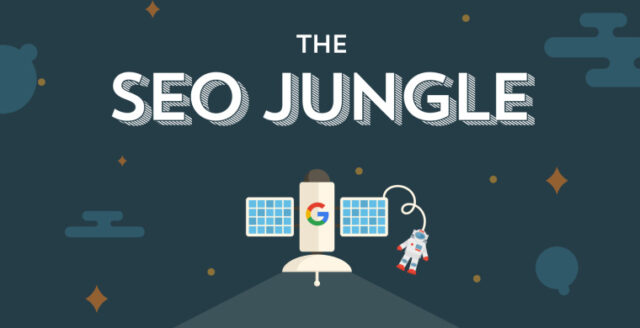
Search Engine Optimization is a chaotic world designed to improve a bigger, more chaotic world of the Internet. If we imagine it to be a jungle it will be easier to understand the ongoing processes within and the agents involved. He who masters the ways of the jungle might carry the title of its king, so let’s begin our journey through it.
SEO, being a technique of upgrading the power of search engines to rightfully position client’s websites makes it a user oriented requisite. Therefore, pay a lot of attention to the engagement of the user related to individual sites. Also, keep up with the keyword movement by monitoring web rankings. A good utility for that is the AWR Cloud tool. As for the search engines themselves, they have narrowed their range into one name – Google. If you want to talk numbers, Google owns more than 66% of the global search market, and glorious 88.9% of the search market in the UK.
What appeals to the user in the moment of addressing a certain website is mainly its content. That is why the content has to be useful to him, entertaining, educational and overall attractive for whatever reason – it has to be adapted to the user’s needs. And achieving this perfect connection is what search engines along with supporting optimizations aspire to accomplish.
So how do search engines work? They use proper algorithms in order to determine user’s search intent. The new Google’s algorithm was introduced in 2013 by the name of ‘Hummingbird’, alluding to the update’s speed and precision. What stands out as an innovation about Hummingbird is the fact that it’s based on semantic search. It focuses on the words meaning and overall better grasping the ultimate purpose of the search. It is usually referred to as ‘conversational search’. This is what channels most of the search queries and makes possible for desired information to be only a few clicks away.
Another hard working animal in our kingdom is ‘Panda’. Panda was introduced by Google in 2011 as an improved search filter. It tends to eliminate sites with poor quality content from working their way into top positions of search results. So there we have a supervisor and a motivator that encourages site content quality.
Up high in the achieving treetop we have another tool from Google that indulges the vast community of mobile users. The fresh mobile oriented algorithm ‘Mobilegeddon’ works on giving the user best results in a mobile environment, which brought up the increase of 5% in mobile-optimized websites in a short period of just a few months of existing. Facing the fact that mobile searchers are outnumbering desktop users more each day, it became of essence whether a certain page is mobile-friendly or not.
Next we have another high performance utility by Google, called ‘Pigeon’. This algorithmic update focuses on establishing correct distance and location parameters during searches, and it gives its best in doing so since summer 2014.
While looking at the sky we must not forget the ones who do their work in the background, unnoticed at first sight, but make all the difference in the world. In the SEO jungle the legwork army is made of ‘spiders’. Spiders crawl 20 billion sites on a daily basis and spider their network web thus providing the engine with adequate pages. Their job is to read pages content and mark it accordingly so that the page occupies a place in the engine’s index. As easier for them it is to do it, the better search results would be. What makes the spiders crawl everywhere are links among pages, so be sure your page is properly linked and has no connection to any untrustworthy sites. If you want to see how spiders work you can install spider software called ‘Screaming frog’ that will scan the website and report important findings such as broken links, redirect links and all sorts of errors that would help you come up with a constructive SEO plan of action.
Beware of the manipulative sites that fake the number of linking sites that lead to it. It this quest, you’ll get help from Google’s ‘Penguin’. Penguin not only identifies such deceiving sites, but also punishes them by lowering their ranking in the search results.
The SEO jungle seems like a functional ecosystem, doesn’t it? However, it evolves in many different directions with time, and that is why new residents with significant functions are brought in to assure the prosperity and survival of true, essential search engine standards. So, below you can check infographic which shows the complete SEO jungle:


















